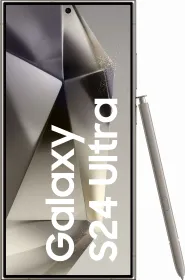The Google Pixel 9 series arrived in global markets last month with much fanfare. Launched with Android 14, it has since been updated to Android 15. This time, the series includes three smartphones—the Google Pixel 9 Pro XL, Pixel 9 Pro, and Pixel 9—all offering the sleek experience of stock Android.
been using the Pixel 9 Pro for some time now, and it distinguishes itself from the base model in several key aspects, such as the inclusion of a 48MP periscope telephoto camera and UWB support. Its LTPO display is also slightly larger than that of the Pixel 9. Beyond these distinctions, you get many premium features like the new Tensor G4 chipset, a 42MP selfie sensor, and a vibrant LTPO display. However, the price is quite high. Launched at ₹1,09,999, it competes directly with the iPhone 15 and 16 series.
Can this phone match the iPhones? Can it deliver a truly premium experience in daily use? These are natural questions. We’ve rigorously tested the performance and camera of this phone, and in this Pixel 9 Pro review, we will attempt to answer them.
Google Pixel 9 Pro Price & Availability
The Google Pixel 9 Pro is available in four color options – Porcelain, Rose Quartz, Haze and Obsidian. It is available in India in a single 16GB + 256GB storage option for Rs 1,09,999.
- 16/256 GB: ₹1,09,999
The Google Pixel 9 Pro is available on Flipkart and other offline retailers.
Pros
- Premium Design
- Bright and Color Accurate AMOLED Panel
- Android 15 with 7 Years of Software Update support
- Excells in Camera department
- AI Feature Rich
- Loud Speaker Setup
- Long Battery Backup
- Ultrasonic Fingerprint scanner
Cons
- A Bit on the heavier side
- Lags behind competitors in performance
- Slow Charging Speeds
Google Pixel 9 Pro Review: Specifications
Here are the specifications of the Google Pixel 9 Pro:
- Display: 6.3” LTPO OLED, 120 Hz, 3000 Nits peak, 1280 x 2856 pixels, 474 PPI, Corning Gorilla Glass Victus 2
- SoC: Google Tensor G4 (1x 3.1 GHz, 3x 2.6 GHz, 4x 1.92 GHz, Mali-G715 MC7)
- RAM: 16 GB LPDDR4X RAM
- Storage: 256 GB UFS 3.1
- Cameras:
- Main: 50 MP, 1/1.131”, f/1.7,
- Ultra-wide: 48 MP, 1/2.55”, f/1.7,
- Telephoto: 48 MP 1/2.55”, f/2.8, 5x optical
- Front: 42 MP, f/2.2
- Speakers: Stereo
- Battery and charging: 4,700 mAh, 27W wired PD, 21W wireless, reverse wired & wireless
- IP rating: IP68
- NFC: Yes
- Biometrics: Under display ultrasonic fingerprint scanner, 2D face unlock
- Weight: 199g
- Build: Glass back, metal frame
Google Pixel 9 Pro Review:Unboxing
Google is committed to sustainability, and the Pixel 9 Pro arrives in a recycled cardboard box with a paper cover. This cover displays an image of the phone in a matching color. Upon opening the box, the phone is revealed, looking quite premium but feeling a bit thick. A noticeable change is the camera bump, which no longer seamlessly merges into the frame. The phone boasts a glass and metal construction. Inside the box, you’ll find a Type-C to Type-C cable and some documentation, but no other accessories.
Google Pixel 9 Pro Review: Design & Build
The Pixel series boasts a truly premium design. The moment you hold it, you realize it’s no ordinary phone. The most striking change is the camera. Gone is the subtly integrated camera island, replaced by a prominent strip that runs across the middle of the rear panel. Yet, the Pixel remains instantly recognizable.
The phone’s color is another attractive feature. The rear panel has a matte finish, contrasting nicely with the glossy metal frame. While the rear panel resists fingerprints, the camera module, unfortunately, attracts them like a magnet.
The phone is a bit thick, which wouldn’t be an issue in itself, but the camera module protrudes significantly. This causes the phone to wobble when placed on a flat surface. However, the centrally located module maintains a balanced aesthetic. Google offers cases that mitigate this wobble, though they are pricey at ₹2,940.
A triple camera setup graces the rear panel, accompanied by an LED light, laser emitter, and a thermometer sensor. My review unit came in a sophisticated light pink, with a premium build and an aluminum frame. Both front and back are protected by Gorilla Glass Victus 2, and the phone boasts an IP68 rating for water and dust resistance.
The left side of the frame is minimalist, housing only the antennas. On the right, you’ll find the power button and volume rocker. Unusually, the volume rocker sits below the power button, a reversal of the typical arrangement. This might take some getting used to. The top of the frame features a noise-canceling microphone and a plastic insert, while the bottom houses the speaker, Type C port, microphone, and SIM tray slot. The phone supports a single nano-SIM and eSIM functionality.
The front of the phone, while similar to other smartphones, exudes a premium feel. A punch-hole camera sits in the top center, and an ultrasonic fingerprint sensor is conveniently positioned in the lower half of the screen. Slim bezels maximize the display, resulting in an 87.6% screen-to-body ratio.
Overall, I found the design to be premium and appealing. However, the phone can be quite slippery without a case. Its thickness (8.5mm) and weight (199 grams) might be a concern for some, though the weight distribution is excellent, making it feel lighter than it is.
Google Pixel 9 Pro Review: Display
The Pixel 9 Pro features a slightly smaller display than its predecessor, measuring 6.3 inches instead of 6.7 inches. It boasts remarkably thin bezels and an impressive 1280 x 2856 pixel resolution. The LTPO panel supports a variable refresh rate from 1Hz to 120Hz and achieves a peak brightness of up to 3000 nits. Corning Gorilla Glass Victus 2 provides robust protection.
Display quality is excellent, rendering colors with vibrancy and accuracy. The dynamic range is also commendable, effectively showcasing details in both shadows and highlights. Two color modes are available, Natural and Adaptive; I primarily used Natural.
Google has significantly enhanced the Pixel 9 Pro’s brightness capabilities with this iteration. The new panel reaches a peak brightness of 3000 nits and a full-screen brightness of 2000 nits. The inclusion of LTPO technology in Super Actua mode enables a dynamic refresh rate, ranging from 1Hz to 120Hz. Smooth Display mode maintains a consistent 120Hz refresh rate during gaming, ensuring fluid animations. While scrolling through social media or other apps, the refresh rate remains at 120Hz for a smooth experience. However, during static activities like viewing photos or reading text, it drops to 1Hz to conserve battery life.
The Pixel 9 Pro supports HDR10 and HDR10+ but lacks Dolby Vision, a feature now common in many lower-priced flagship smartphones. HDR content can be streamed on YouTube and Netflix. In my experience watching Netflix shows, the display effectively rendered bright highlights and deep shadows in HDR content.
Google Pixel 9 Pro Review: Speakers and Haptics
The Pixel 9 Pro has a dual speaker setup. The main speaker is located on the bottom edge, while the earpiece above the screen serves as a secondary speaker. Together, they produce impressive volume and deliver excellent audio quality with clear vocals and instrument separation. Even at maximum volume, the audio quality remains distortion-free. The haptics on the phone are also tuned well, with enough tightness delivering quality experience.
Google Pixel 9 Pro Review: Software
The Pixel 9 Pro now runs Android 15, offering a significantly enhanced user experience with several new features and AI capabilities. Pixel phones provide the cleanest version of Android, and the company promises an impressive seven software updates, the most in the industry. Currently, only Google and Samsung offer such long-term support, ensuring your phone receives all software and security updates until 2031. Additionally, it provides a completely bloatware-free experience, with no pre-installed apps except Google’s own.
While the phone was initially released with Android 14, it has since been updated to Android 15. This update brings a plethora of AI features designed to assist with everyday tasks and enhance the photography experience. However, there are no changes to the interface or appearance, so you might not even notice the update.
Among the new features, Private Space stands out from a security perspective. It allows you to create a separate, password-protected area within the phone where you can hide apps and documents. However, accessing this space requires a separate sign-in and re-downloading apps already on the phone. This feature could be more user-friendly.
Additionally, there’s a Theft Detection feature that instantly locks the screen if someone tries to snatch your phone, preventing access to your personal information.
Gemini also offers several impressive AI features. For instance, the Gemini Live AI chatbot can answer your questions and offer advice on planning various activities. Gemini Advanced, on the other hand, is designed for longer, more complex chats and can assist with research and finding specific information. Although I didn’t need to use either during my testing, they could be beneficial for those who rely on AI for various tasks.
The camera also boasts AI features like Pixel Studio and Magic Editor. These allow you to generate images using text prompts and edit photos by changing backgrounds and more. I had fun experimenting with these during my review, though they might not be essential for everyday use. Other AI-powered camera features include AI-Powered Zoom, Face Unblur, and Real Tone.
With the Live Translate feature, you can translate and read text in over 48 languages by pointing the camera at it after clicking the lens icon in the Google search bar. Smart Suggestions can help you while composing emails, Adaptive Battery optimizes battery consumption by learning your usage patterns, and Assistant Routines can automate tasks based on your daily routine, such as displaying weather information and calendar reminders after turning off your morning alarm.
Apart from these, there are features like Call Screen and Voice Typing for calling, but they are not currently available in India.
Google Pixel 9 Pro Review: Biometrics
The Pixel 9 Pro boasts Qualcomm’s ultrasonic fingerprint sensor, renowned for its superior security and speed compared to optical alternatives. In practice, it performs admirably, proving both reliable and accurate. Furthermore, the phone offers face unlock as an additional security measure. Throughout my testing, this feature consistently unlocked the device with impressive speed. However, it’s worth noting that it doesn’t quite reach the same level of security as Apple’s FaceID.
Google Pixel 9 Pro Review: Performance
The Pixel 9 series is powered by Google’s Tensor G4 chipset. This octa-core processor features a single high-performance Cortex-X4 core clocked at 3.1 GHz, three Cortex-A720 cores clocked at 2.6 GHz, and four efficiency-focused Cortex-A520 cores at 1.92 GHz. While it utilizes the same Mali-G715 MC7 GPU as the Tensor G3, it’s now clocked at a higher 940Hz. The Pixel 9 Pro offers 16GB of LPDDR5X RAM and a range of storage options: 128GB, 256GB, 512GB, and 1TB.
In everyday use, the Tensor G4 performs admirably. The phone feels fluid and responsive when browsing the web, scrolling through social media, taking photos, navigating, and switching between apps. Gaming performance is also surprisingly good. Unlike the Tensor G3, which was plagued by reports of overheating, the G4 remained relatively cool during my testing. Even after 30 minutes of gaming, it only became slightly warm, which is perfectly normal. While its performance isn’t quite at the level of the Snapdragon 8 Gen 3, it’s still more than capable of handling demanding games.
However, benchmark tests tell a different story. The Pixel 9 Pro lags significantly behind current flagship phones in benchmarks like AnTuTu. The graphics performance of its Mali-G715 MC7 GPU is also average, as evidenced by its lower rankings in 3DMark tests. For example, the Pixel 9 Pro achieved an AnTuTu score of 908,899. In comparison, the Snapdragon 8 Gen 3-powered Realme GT 7 Pro scored 2,721,980, and the more affordable Oppo Find X8 with a MediaTek Dimensity 9400 reached 2,314,936.
Google Pixel 9 Pro Review: Cameras
The Pixel 9 Pro boasts an impressive camera system that captures truly stunning images. Let’s delve into the specifications. It features a 50MP primary camera with a Samsung GNK sensor, an f/1.68 aperture, optical image stabilization (OIS), and laser detect autofocus (LDAF). This is complemented by a Samsung GN2 sensor for enhanced image processing. Additionally, there’s a secondary 48MP ultrawide Sony IMX858 sensor with an f/1.7 aperture and macro capability, and a third 48MP Sony IMX858 5x telephoto camera with an f/2.8 aperture, OIS, and 30x digital zoom. The camera system also supports HDR recording, Cinematic Blur, and 4K video recording at 60 frames per second (fps).
For selfies, the Pixel 9 Pro offers a 42MP Sony IMX858 sensor with autofocus, an f/2.2 aperture, and 4K video recording at 60 fps.
Excellent photography relies on the synergy between hardware and software, and the Pixel 9 Pro excels in this regard. Daytime images are superb, with vibrant colors, excellent dynamic range, and well-defined shadows and highlights. Skin tones in photos captured with the primary camera appear remarkably natural. (See samples below.) When using the 2x zoom, the image is cropped from the primary sensor, resulting in a slight reduction in detail.






Low-light performance is generally good, though details can become slightly soft. While the camera produces images suitable for social media, it falls short of the exceptional low-light capabilities offered by competitors like the iPhone 16 and Galaxy S24 Ultra, especially considering its price point.
The 48MP ultrawide camera is another highlight, capturing images with impressive detail. Even in low light, this camera delivers bright, well-exposed shots. The macro function, activated automatically when the camera is brought close to a subject, provides good detail, though occasional blurriness can occur in certain areas.


The 48MP 5x telephoto camera performs well, offering good detail and sharpness. However, it wouldn’t be accurate to claim it’s the best in its class. Colors and dynamic range are generally good in telephoto shots, but images can sometimes appear slightly soft. Images captured with 10x to 30x zoom are surprisingly good, exhibiting minimal noise.
Portrait mode is another strength, producing images with natural skin tones and a pleasing background blur that effectively isolates the subject.


The camera also offers features like Action Pan, AI Unblur, and Add Me. Action Pan aims to capture moving subjects sharply while blurring the background. In my experience, this feature yielded inconsistent results. While one shot turned out well, others failed to capture the subject clearly. The Add Me feature allows users to merge separate group and individual photos seamlessly.
Google Pixel 9 Pro Review: Battery Life and Charging
The Google Pixel 9 Pro boasts a 4700mAh battery with 27W wired and 21W wireless charging capabilities. However, a charger is not included in the box. For optimal charging, consider purchasing a Google charger separately or using a compatible charger from another Android smartphone.
Despite our initial skepticism about the 4700mAh battery’s longevity, it effortlessly powered through a full day of extensive use, including photography, video streaming, and benchmark tests. Even with routine tasks like calling, social media browsing, and WhatsApp messaging, I found no need to recharge during the day. However, the battery level did dip to 10% by evening. Under normal usage conditions, it should comfortably last a little over a day.
While the Pixel 9 Pro supports 27W fast charging, we opted to use a 68W charger. This resulted in a 0 to 31% charge in 30 minutes, with a full charge to 100% taking approximately 1 hour and 31 minutes.
Review Verdict: Should You Buy the Google Pixel 9 Pro?
Smartprix Rating: 8.5/10
Design and Build: 8/10
Display & Speakers: 9/10
Software: 8.5/10
Haptics: 9/10
Biometrics: 8/10
Performance: 8.5/10
Cameras : 8.5/10
Battery Life & Charging: 8/10
The Google Pixel 9 Pro is a refinement of the Pixel formula, boasting a stunning display, a powerful Tensor G4 chip, and an impressive camera system that excels in low-light photography. Its updated design feels premium, and the software experience remains smooth and intuitive. While battery life could be better, the Pixel 9 Pro is a top contender for Android enthusiasts seeking a flagship experience.
First reviewed in December 2024.





































